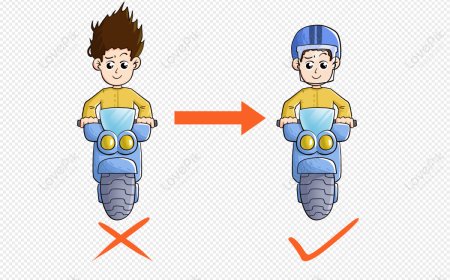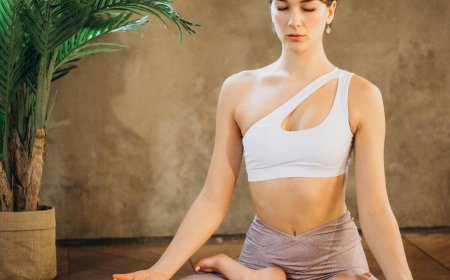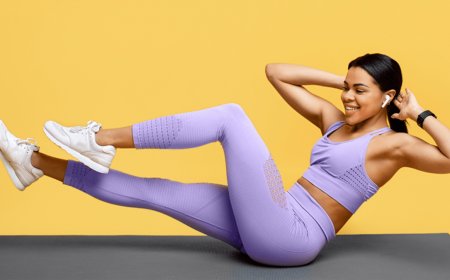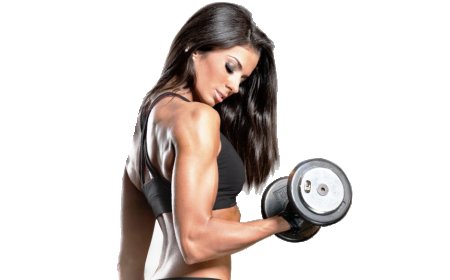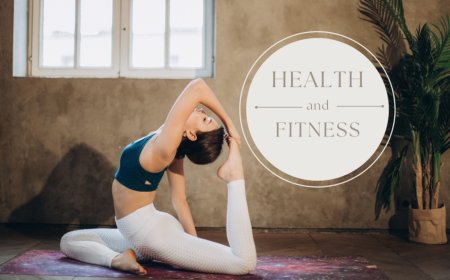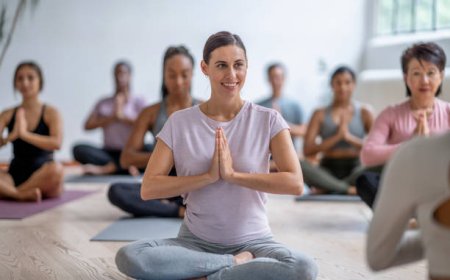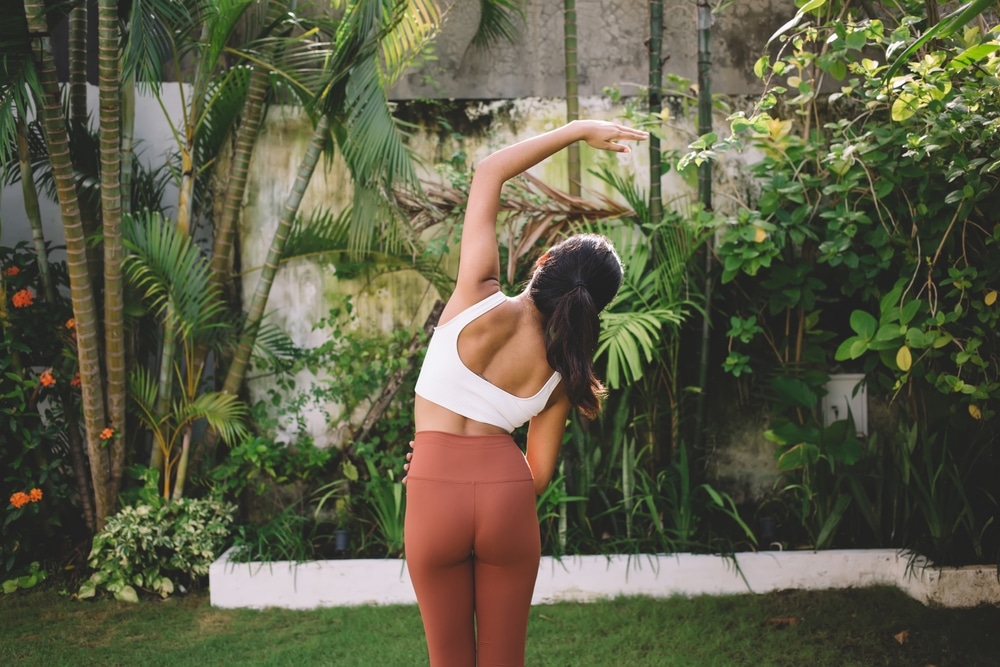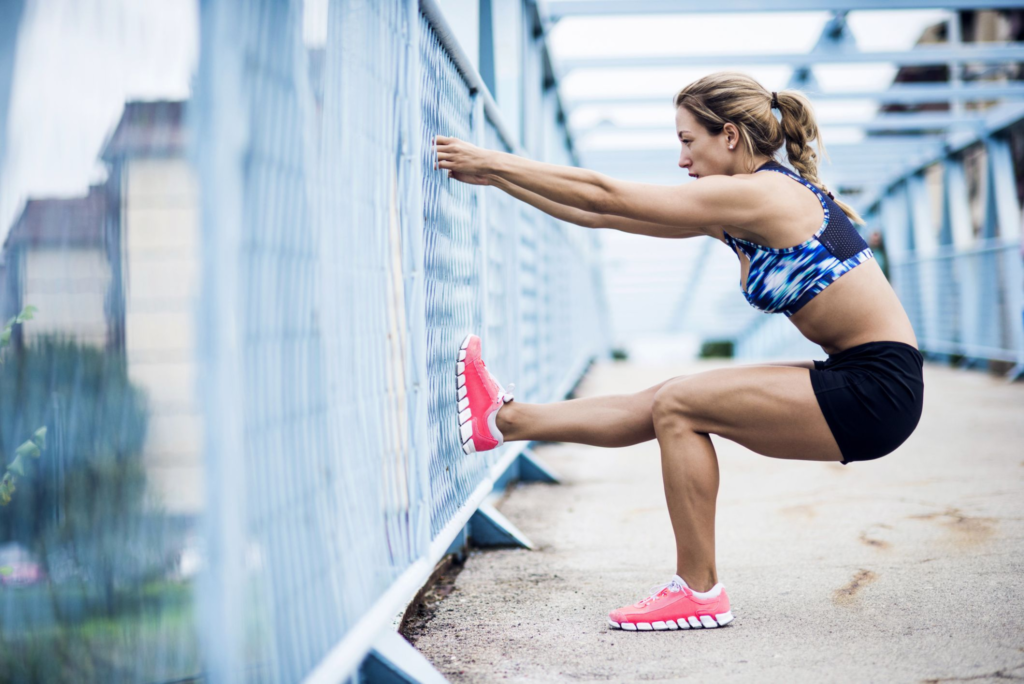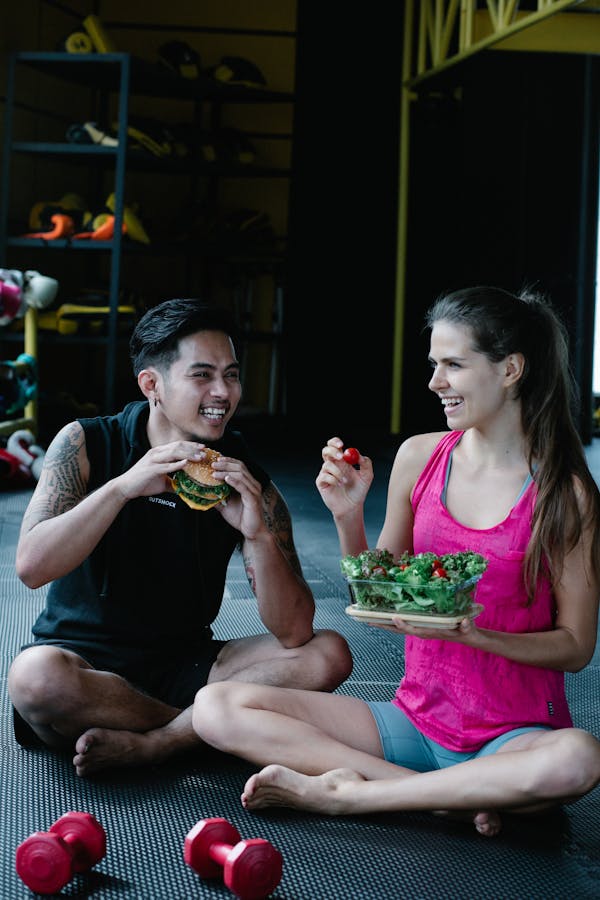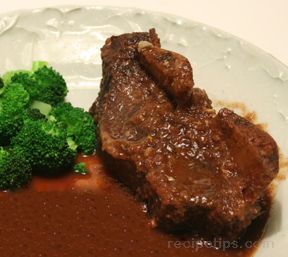What Muscle Groups Do I Workout Together?
Whether you’re just getting started strength training or you’ve been in the groove for a while, it’s important to be educated on how you can get the most out of your workouts. For busy lifestyles, it makes sense to train multiple muscle groups in one session instead of one muscle group at a time. One […] The post What Muscle Groups Do I Workout Together? appeared first on Get Healthy U | Chris Freytag.
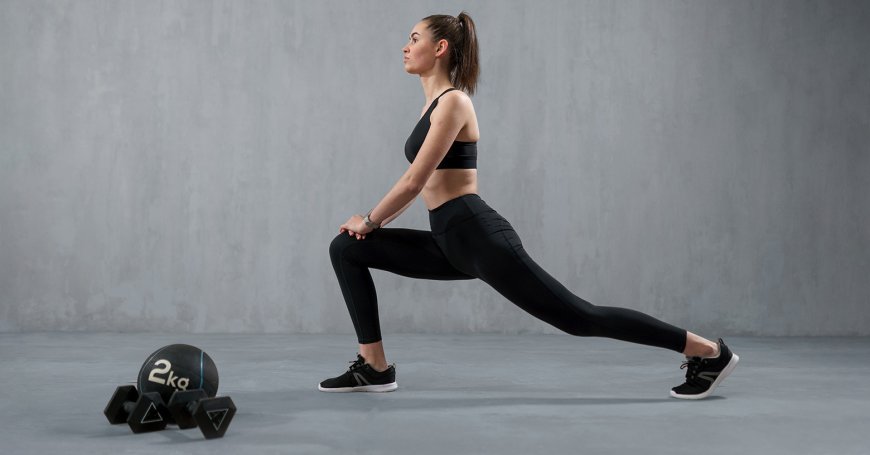
Whether you’re just getting started strength training or you’ve been in the groove for a while, it’s important to be educated on how you can get the most out of your workouts. For busy lifestyles, it makes sense to train multiple muscle groups in one session instead of one muscle group at a time.
One of the most common questions people have when they first start strength training is, “What muscle groups do I work out together?”
Here, we’ll take a look at the best muscle group combinations to work out together and—better yet—give you a few quick workouts to create a weekly training schedule.
So, Which Muscle Groups Should You Workout Together?
The best muscles to work out together are opposing muscle groups—for example, working the front and back of your body in the same session. Some opposing muscle groups to work out together include:
- Chest and back
- Quads and hamstrings
- Glutes and Abdominals
- Biceps, triceps, and shoulders
These are a few popular options for certain muscle groups to work out together, but it is by no means an exclusive list.
Strength Training Opposing Muscle Groups
One of the most common ways to lift weights (and certainly a favorite of weightlifters everywhere) is to train opposing muscle groups.
These opposing muscles are also called agonists and antagonists and they work together for many of the movements we make. Simply put, you are working both the front and the back part of one particular area of the body on the same day.
To help you get started, here are the basic minimum guidelines for resistance training given by The American College of Sports Medicine (“ACSM”):
- Do some kind of strength training a minimum of twice a week
- Healthy adults perform at least one set of 8-12 repetitions
- 8-10 exercises should be performed to target the major muscle groups: Chest, back, shoulders, biceps, triceps, abdomen, quadriceps, and hamstrings
And because you need 48 hours of rest for the muscle you work with, it is convenient to follow up the next day with a different part of the body. This gives your muscle groups time to recover.
Below, we’ve put together four workouts for training opposing muscle groups:
Muscle Groups to Workout Together: Chest & Back
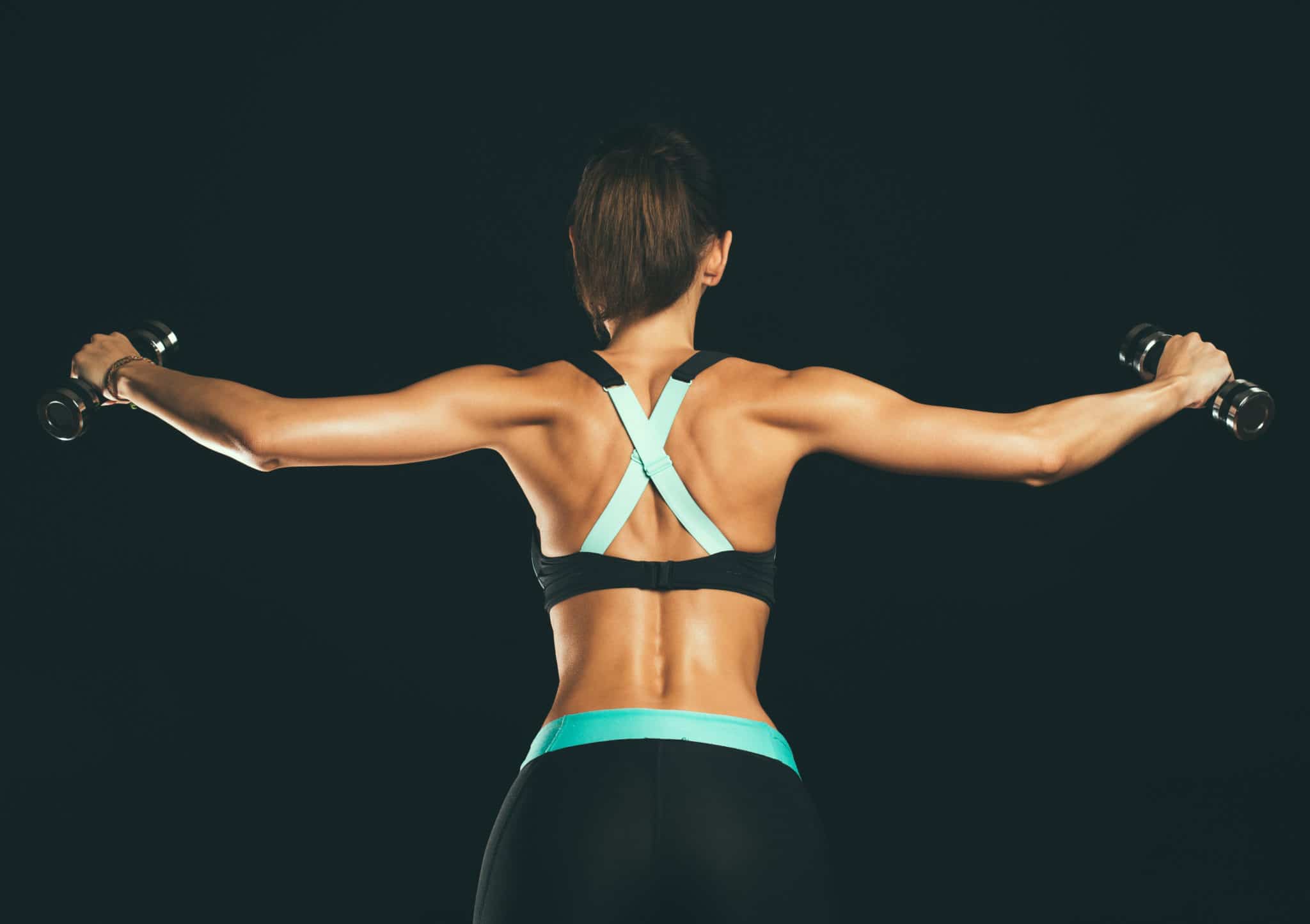
Whether you’re getting ready for tank top season or just want to feel good about your upper body, this workout is going to be it for you! But just remember, you have to lift weights in order to strengthen and tone your arms, just like you do your lower body!
These upper body movements will round out your chest and back muscles, focusing on the front and backside of your upper body.
Equipment: Medium-to-heavy set of dumbbells. I tend to use 12 lb dumbbells when I work my upper body. Feel free to use anywhere between 8 lb and 15 lb dumbbells. Choose the weight that allows you to complete the workout and is still a little challenging!
Workout Instructions: This upper body workout will be done in a circuit-type format. Complete each exercise for a total of 45 seconds and rest for 15 seconds. The 15-second rest is to catch your breath and get you ready for the next movement.
1. Chest Fly
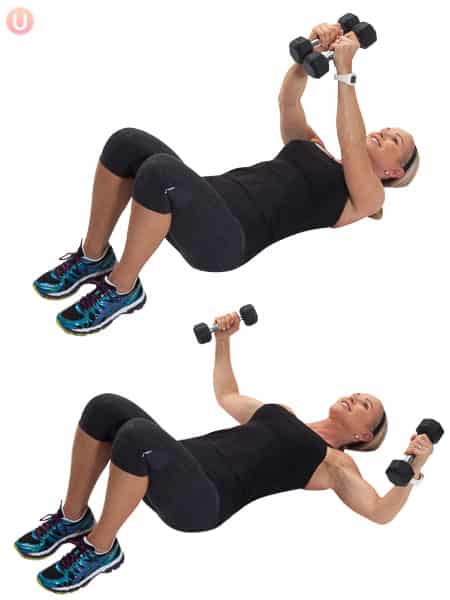
Here’s how to perform chest flys:
- Lie on back with knees bent and feet on the floor and hold dumbbells straight up over chest.
- With a slight bend in the elbow, slowly open arms wide out to the side.
- Squeeze your chest as you bring the weights back together at the top.
- Repeat for the desired number of reps.
You Might Also Enjoy:
- Juicing Recipes and Tips For Beginners
- The 10 Yoga Poses You Should Do Everyday
- 15 Best Healthy Late-Night Snacks For Weight Loss
2. Renegade Row
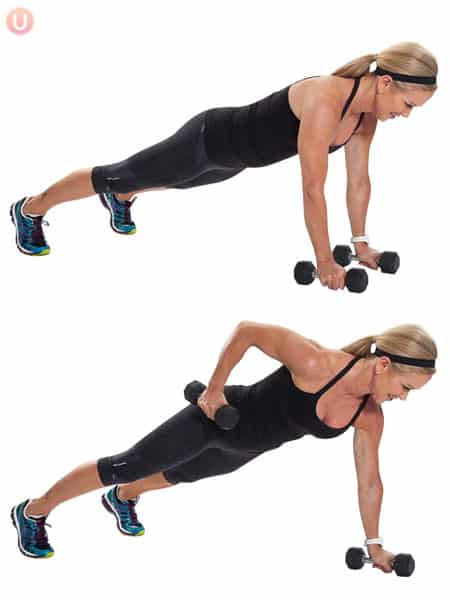
Here’s how to do a renegade row:
- Begin in a full plank with dumbbells in hands, arms extended, and toes (kneeling variation is fine if you are not able to do a full plank). Engage your abdominals drawing the belly inward towards your spine.
- Pull the right dumbbell up toward right hip bone keeping the weight close to your side. Slowly return it to the floor and repeat with the left dumbbell.
This will have your chest, shoulders, and triceps burning–and your heart rate up
3. Push-Up
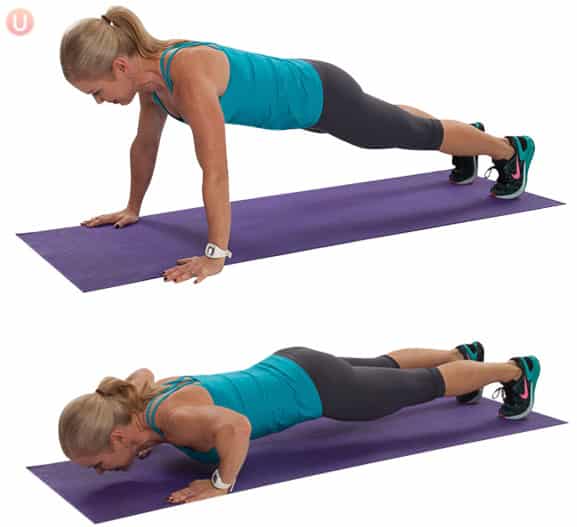
Think you need to bench press to get great shoulders? Think again.
The push-up is the holy grail of strength moves. The push-up targets several muscle groups all in one efficient exercise.
Here’s how to do a push-up:
- Begin in a plank position with hands below shoulders, legs long behind you, and body contracted to hold your spine in a straight line.
- With elbows pointing slightly back, bend elbows and slowly begin to lower your body until you are just above the ground. Keep your gaze over your fingertips and body in a straight line.
- As you exhale, tighten your belly and then push yourself back up to a plank position. That is one repetition.
4. Reverse Grip Double Arm Rows
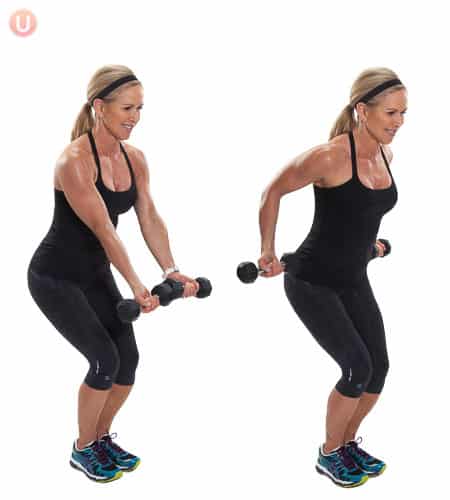
Here’s how to do reverse grip double arm rows:
- Start with legs together and sit back into a slight squat engaging abdominal. Arms are in front of the body holding dumbbells at hip height with palms facing the ceiling.
- Draw elbows back past hips gently hugging the side body so you feel lats and triceps engage and return forward with control.
This exercise targets the back muscles which is an often-overlooked muscle group in women.
5. Chest Press
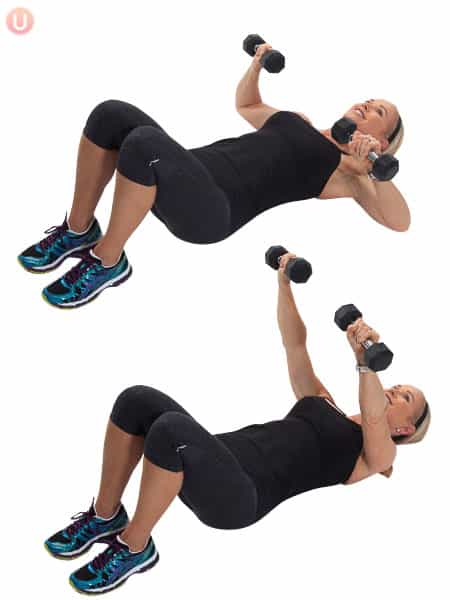
Here’s how to perform a chest press:
- Lie on back with knees bent and feet on the floor. Elbows are bent and dumbbells start at shoulder height.
- Extend arms fully pressing away from your chest. Then, slowly lower to start position.
Your chest, shoulders, and triceps get major muscle-building benefits from this move.
6. Overhead Pull
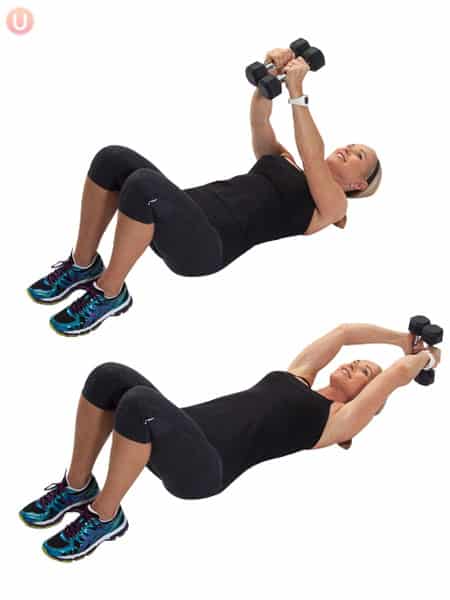
This targets the shoulders and triceps, muscle group. Here’s how to perform an overhead pull:
- Lie on back with knees bent and feet on the floor. Arms are extended above the chest to start. Engage your abdominals.
- Lower dumbbells past your head keeping arms mostly straight with elbows slightly bent.
- Keeping abdominals tight, raise dumbbells back to start. The low back should stay firm against the floor throughout.
Repeat the circuit 3 times for a complete 20-minute upper-body workout!
Related: What’s The Difference Between Muscle Strength and Muscle Endurance?
Muscle Groups to Workout Together: Quads & Hamstring
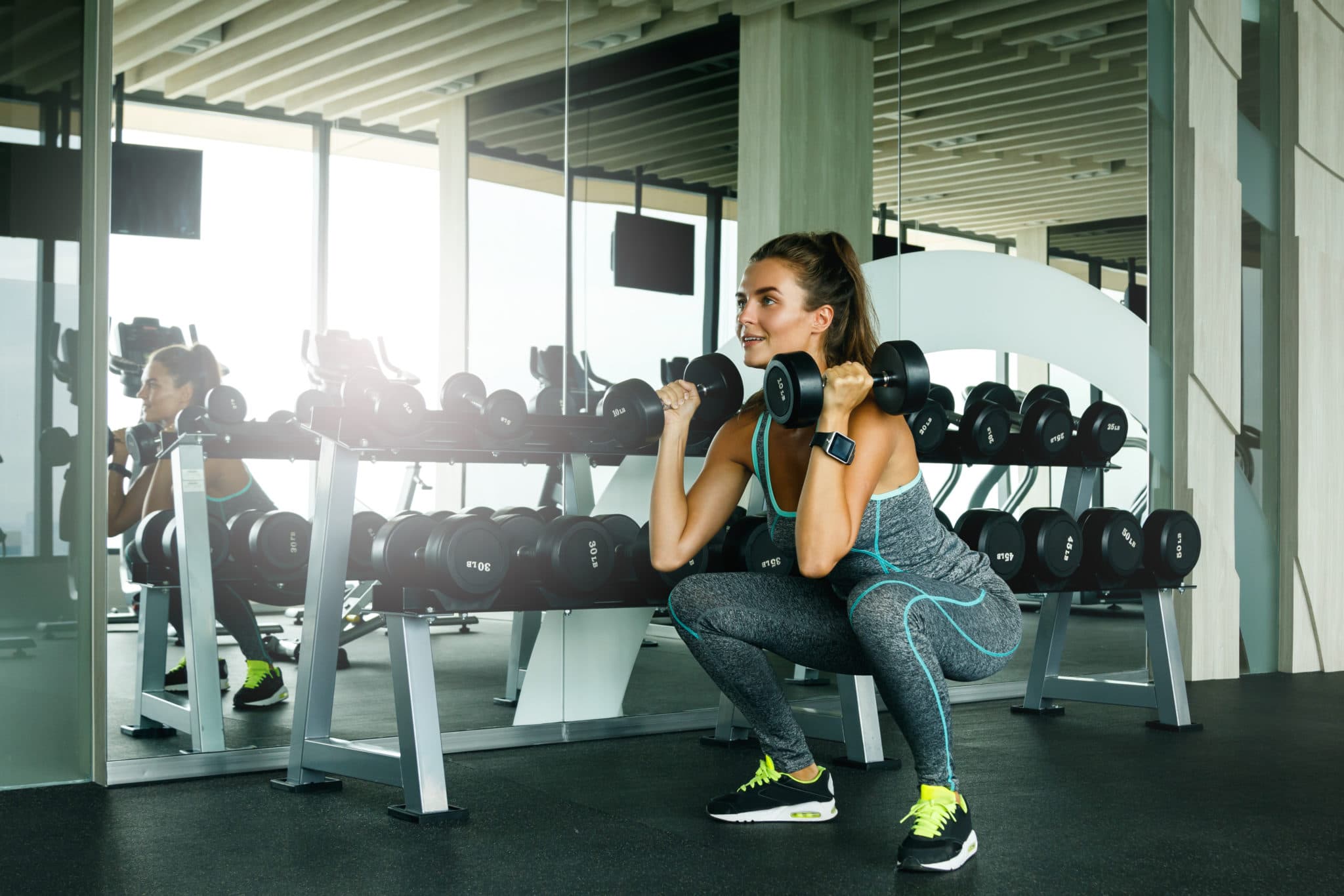
Did someone say leg day?! Lower body strength training workouts are some of the most commonly searched workouts on the internet—because who doesn’t love a good leg burn?
The goal of this workout is to target the quad and hamstring muscles together and to find fatigue in your lower body. If you get to the last couple of reps and you feel like you can’t do one more, that’s exactly where you should be.
And finally, if you come to the last couple of reps and feel like you could do more, pick up heavier weights!
Equipment: You will need a set of medium-to-heavy dumbbells. Also, I would personally grab a set of 12 or 15 lb dumbbells but anywhere between 8 lb and 20 lb dumbbells would be advised depending on your level of fitness.
Workout Instructions: This workout will consist of 6 total lower body movements (3 focused on the quads and 3 focused on the hamstring, the backside of your leg). Complete 12 repetitions per exercise and repeat the entire workout a total of 3 times!
1. Basic Squat
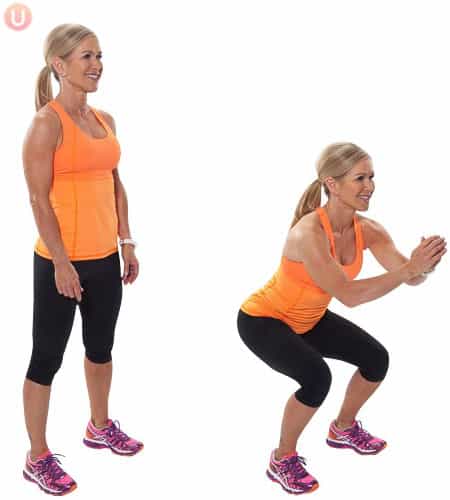
Here’s how to perform a basic squat:
- Stand tall with your feet hip-distance apart. Your hips, knees, and toes should all be facing forward.
- Bend your knees and extend your buttocks backward as if you are going to sit back into a chair. Make sure that you keep your knees behind your toes and your weight in your heels.
- Rise back up and repeat.
2. Deadlift
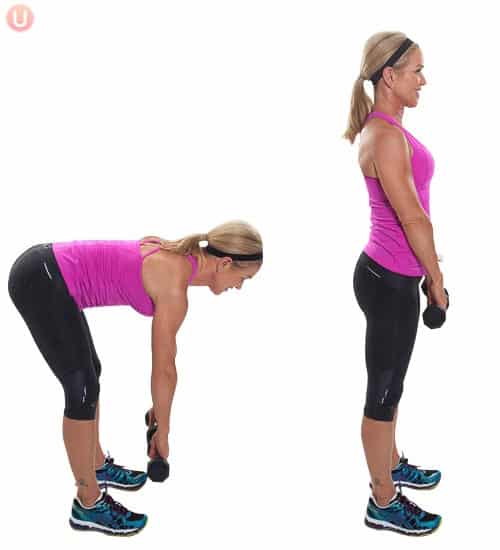
Here’s how to perform a deadlift:
- Start standing with feet hip-distance apart and then dumbbells resting in front of thighs.
- Tighten your abdominals and keep a flat back as you bend the knees slightly, lowering the dumbbells towards the floor.
- Squeeze the glutes and use your hamstrings and legs to lift and return to your upright position.
3. Alternating Lunges (6 reps per side)

Here’s how to perform alternating lunges:
- Stand tall with your feet hip-distance apart.
- Take a large step forward and lower your body toward the floor. Both legs should be bent at a 90-degree angle at the bottom of the lunge.
- Push off the front leg to rise back up to start, and repeat on the other side.
4. Single-Leg Hamstring Bridge (Left Side)

Here’s how to perform a single-leg hamstring bridge:
- Lie on back with bent knees hip-distance apart, and feet flat on mat stacked under the knees. Extend one leg long towards the ceiling.
- Squeeze glutes and lift hips off the mat into a bridge. Lower and lift the hips for the desired number of reps then repeat on another side.
5. Pistol Squat
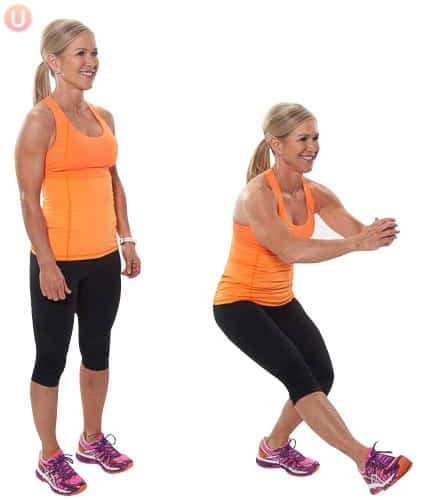
Here’s how to perform pistol squats:
- Stand with feet hip-distance apart and extend 1 leg long on the front of the body.
- Bring hands to hips or the front of your body for balance. Sit back into a squat with weight in the heel of the foot, then slowly stand back up using your glute and hamstring muscles.
- Repeat for the desired number of reps and switch sides.
6. Single-Leg Hamstring Bridge (Right Side) (see instructions above)
Repeat the entire circuit 3 times!
Muscle Groups to Workout Together: Bicep, Tricep & Shoulder
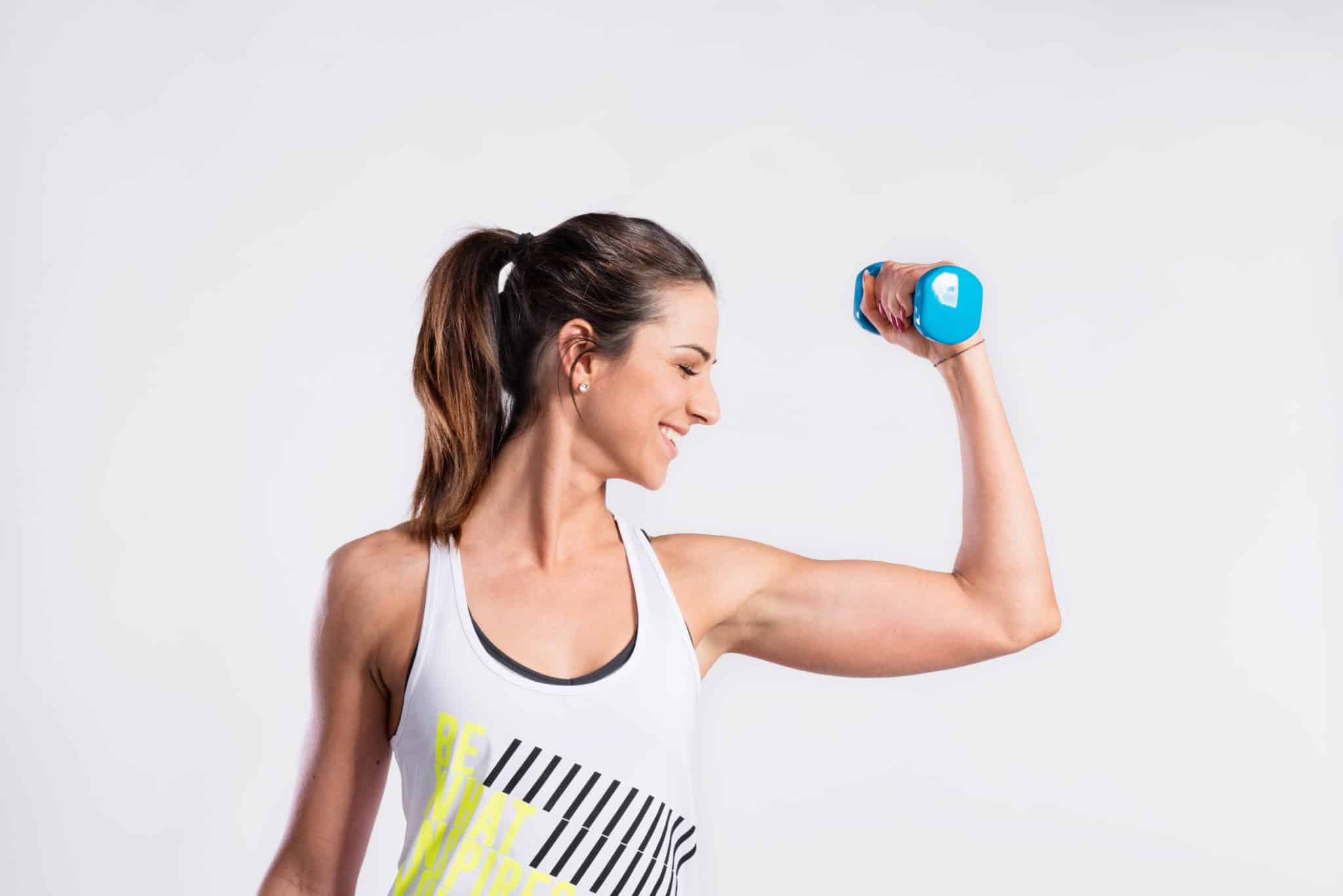
The term “HIIT” workout is often used for cardiovascular workouts but did you know that it can also be used in upper body workouts as well?
In this upper body HIIT workout, I am going to show you how quickly and efficiently you can work your upper body. These target muscle groups like the back, biceps, and abs in one efficient training program.
Using dumbbells and your body weight, we are going to HIIT it hard and burn out your upper body!
Equipment: A light to a heavy set of dumbbells. I would use anywhere between 10-12 lb dumbbells. Choose a weight that you can hold onto for a 20-second interval.
Workout Instructions: For each of these exercises you are going to go as hard as you can for a working interval of 20 seconds, then rest for 10 seconds before going into the next move. Repeat the entire training sequence again for a total of 5 intervals for a 20-minute workout.
Block 1: 20 seconds each/ 10 seconds in between to rest
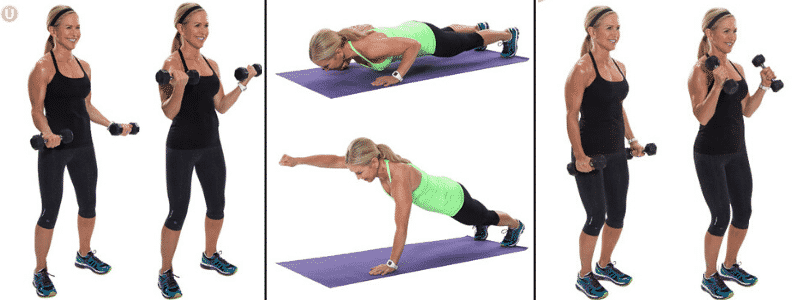
Block 2: 20 seconds each/ 10 seconds in between to rest
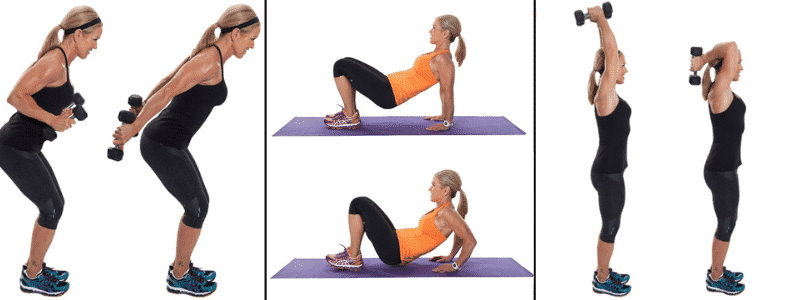
Block 3: 20 seconds each/ 10 seconds in between to rest

Complete the total circuit 5 rounds and you will have completed a 20-minute upper body workout toning the biceps, triceps, and shoulders all together!
Muscle Groups to Workout Together: Glute & Abdominal
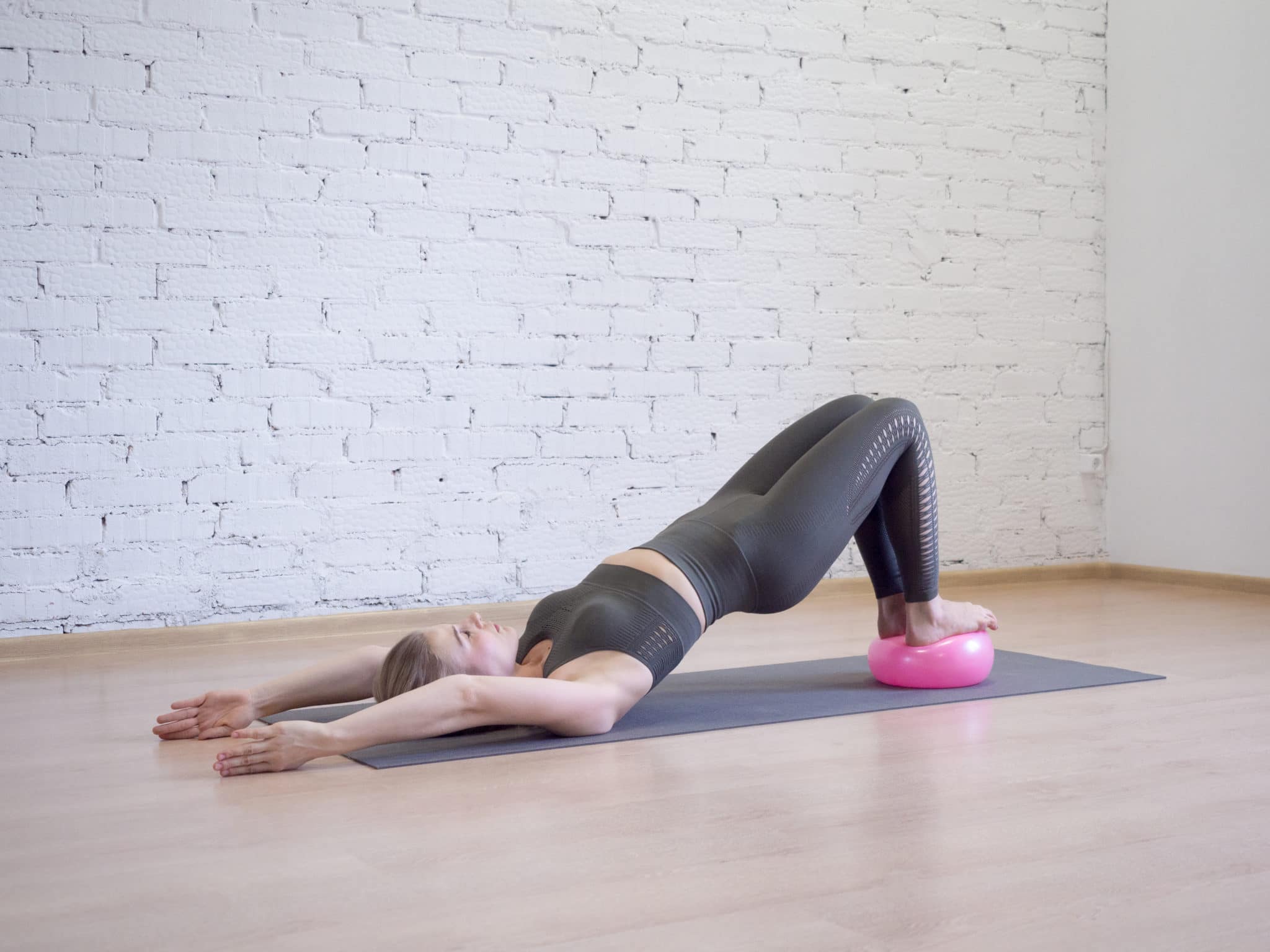
Glutes and Abs are two of the most popular muscle groups to train together. Try this 10-Minute Butt and Ab workout as a stand-alone quick and efficient workout or add this onto the end of a leg day workout as a “burnout.”
Workout Instructions: The workout consists of six total exercises – two glute-focused movements and two abdominal-focused exercises. You will alternate between the lower body-focused movement and the abdominal-focused movement and finish with two burnout movements that combine core and legs together!
Circuit – you will complete each of the below movements for 30 seconds each completing the full circuit 4 times through!

- Cross Behind Lunge – 30 Seconds
- Forearm Plank – 30 Seconds
- Glute Kicker – 30 Seconds
- Full Sit Up – 30 Seconds
Burnout – after completing the above circuit 4 times through, you will end with the following two exercises to “burnout.” Complete the burnout circuit 2 times through to complete the 10-minute circuit!
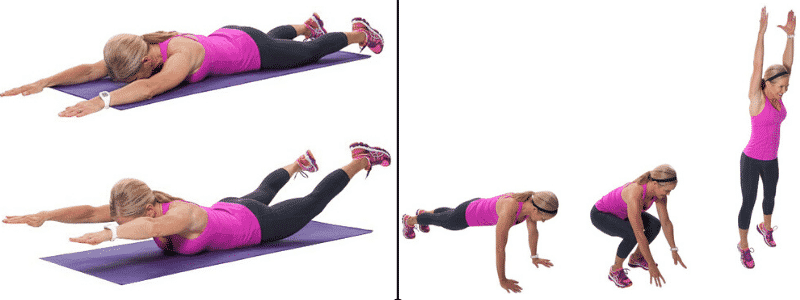
Muscle Groups to Workout Together: Sample Schedules
Opposing Muscle Workouts: 4 Days a Week
- Monday: Upper Body – Chest and Back
- Tuesday: Legs – Glutes and Hamstrings
- Thursday: Upper Body – Shoulders and Arms
- Saturday: Lower Body – Glutes and Abdominals
Opposing Muscle Workouts: 3 Days a Week
- Day 1: Chest, back (opposing groups), shoulders
- Day 2: Biceps, triceps (opposing groups) abs
- Day 3: Quads, hamstrings (opposing groups) glutes
Opposing Muscle Workouts: 2 Days a Week
We know life is busy so if two strength sessions per week works best in your schedule, divide up the body into the upper and lower body. Because you are doing more muscle groups in each session, you may do less repetitions or less exercises for each muscle group, which is actually good for beginners. You can use the exercises from above.
- Day 1: Upper body: Chest, back, bicep, tricep, shoulders
- Day 2: Lower body and core: glutes, hamstrings and abs
FAQS
You should pick a weight where you feel muscle fatigue by the 15th repetition. It’s the feeling like you can barely do one more rep. But if you are a beginner, then start lighter and build up to allow your joints and muscles to acclimate.
Many of these exercises in our workout are just bodyweight. But as you get stronger you can add dumbbells. And yes the larger muscle groups like lower body muscles, chest and back can take heavier weights than your smaller muscle groups like shoulders, biceps and triceps.
There is no right way to divide up your week. It all depends on your job, lifestyle, and fitness level. It’s a good idea to allow at least one or two days between strength sessions to allow your muscles to recover and repair.
Delayed-onset muscle soreness (DOMS) is muscle pain and stiffness that occurs after strenuous or unusual physical activity.Its the phenomena that happens as part of s the repair process that happens in your muscles in response to microscopic muscle damage causes by strength training. Often DOMS is worse on Day 2.
READ THIS NEXT: Bodyweight vs. Weighted Workouts: Which Is Better?
The post What Muscle Groups Do I Workout Together? appeared first on Get Healthy U | Chris Freytag.
What's Your Reaction?























